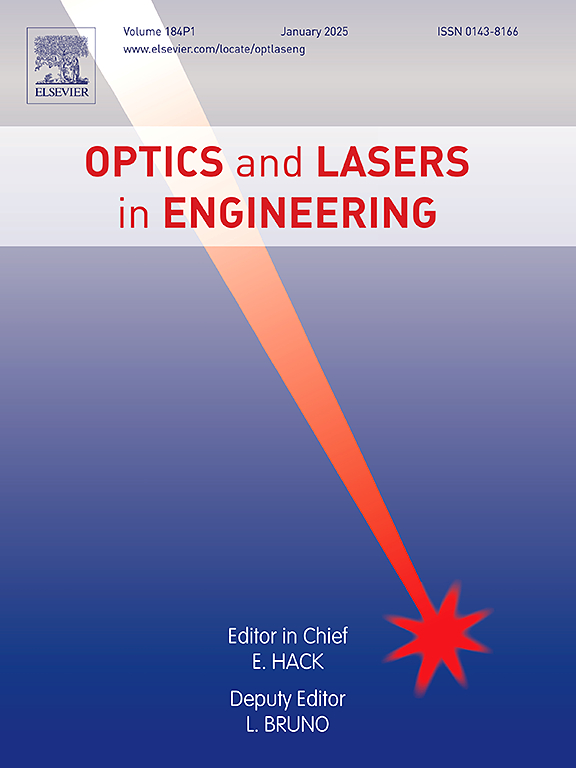Investigation of full polarization characteristics of aerosols and cloud particles with Stokes lidar
IF 3.5
2区 工程技术
Q2 OPTICS
引用次数: 0
Abstract
Traditional polarization lidar has been widely used in the observation of atmospheric aerosol and cloud. To study the full polarization characteristics of aerosol and cloud particles and their variation with height more accurately, a new full polarization vector Stokes lidar system has been developed. A new method of eight-point online calibration of full Stokes parameters is proposed. The total root-mean-square (RMS) deviation of the full polarization vector Stokes after online calibration is 0.0016. The full polarization vector Stokes of aerosol and cloud can be detected in real time and with high precision by the system. Vertical structural changes in the full polarization characteristics of atmospheric aerosol and cloud particles under clear and cloudy skies were observed using the system. Results show that in clear sky, the absolute values of S1, S2, and S3 above 3.2 km tend to be 0, with most aerosol particle morphologies spherical or spheroidal. Below 3.2 km, their absolute values are non-zero, indicating the presence of many non-spherical particles with directional scattering properties or complex structures. In cloudy sky, the absolute values of S1, S2, and S3 at 3.4 km all show a second peak. The microphysical processes are active, with the highest number of non-spherical ice crystals or cloud droplets, and the particle morphology is complex. The study shows that the fully polarization vector Stokes is extremely sensitive to aerosol concentration, morphology and cloud particle detection. The lidar provides new methods for studying of aerosol classification, cloud phase detection, aerosol-cloud interaction, and microphysical properties.
用Stokes激光雷达研究气溶胶和云粒子的全偏振特性
传统偏振激光雷达已广泛应用于大气气溶胶和云的观测。为了更准确地研究气溶胶和云粒子的全偏振特性及其随高度的变化,研制了一种新的全偏振矢量Stokes激光雷达系统。提出了一种全Stokes参数八点在线标定的新方法。在线标定后的全极化矢量Stokes的总均方根(RMS)偏差为0.0016。该系统可以实时、高精度地检测气溶胶和云的全偏振矢量斯托克斯。利用该系统观测了晴空和多云条件下大气气溶胶和云粒子全极化特征的垂直结构变化。结果表明:晴空条件下,3.2 km以上的S1、S2和S3的绝对值趋于0,气溶胶颗粒形态多为球形或球状;在3.2 km以下,它们的绝对值是非零的,表明存在许多具有定向散射性质或复杂结构的非球形粒子。在多云的天空中,3.4 km处S1、S2、S3的绝对值都出现了第二个峰值。微物理过程活跃,非球形冰晶或云滴数量最多,颗粒形态复杂。研究表明,全极化矢量Stokes对气溶胶浓度、形态和云粒子检测极为敏感。激光雷达为气溶胶分类、云相位检测、气溶胶-云相互作用和微物理特性的研究提供了新的方法。
本文章由计算机程序翻译,如有差异,请以英文原文为准。
求助全文
约1分钟内获得全文
求助全文
来源期刊

Optics and Lasers in Engineering
工程技术-光学
CiteScore
8.90
自引率
8.70%
发文量
384
审稿时长
42 days
期刊介绍:
Optics and Lasers in Engineering aims at providing an international forum for the interchange of information on the development of optical techniques and laser technology in engineering. Emphasis is placed on contributions targeted at the practical use of methods and devices, the development and enhancement of solutions and new theoretical concepts for experimental methods.
Optics and Lasers in Engineering reflects the main areas in which optical methods are being used and developed for an engineering environment. Manuscripts should offer clear evidence of novelty and significance. Papers focusing on parameter optimization or computational issues are not suitable. Similarly, papers focussed on an application rather than the optical method fall outside the journal''s scope. The scope of the journal is defined to include the following:
-Optical Metrology-
Optical Methods for 3D visualization and virtual engineering-
Optical Techniques for Microsystems-
Imaging, Microscopy and Adaptive Optics-
Computational Imaging-
Laser methods in manufacturing-
Integrated optical and photonic sensors-
Optics and Photonics in Life Science-
Hyperspectral and spectroscopic methods-
Infrared and Terahertz techniques
 求助内容:
求助内容: 应助结果提醒方式:
应助结果提醒方式:


